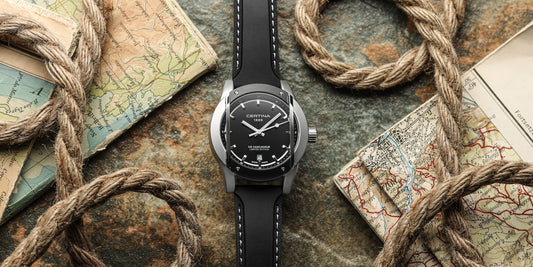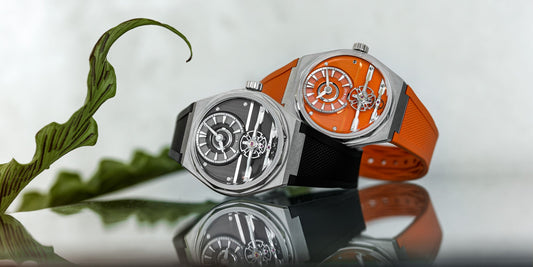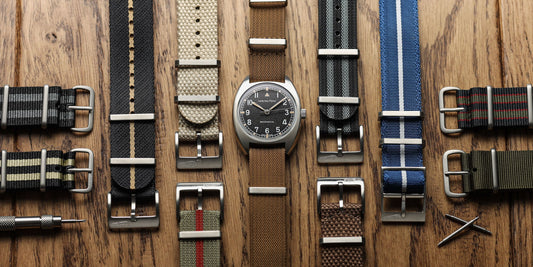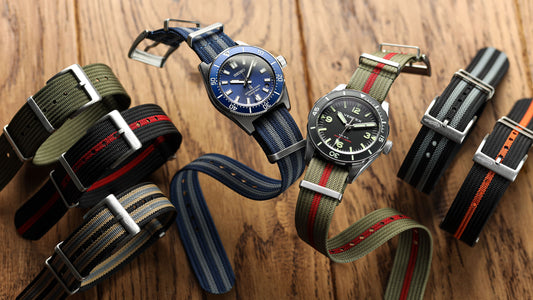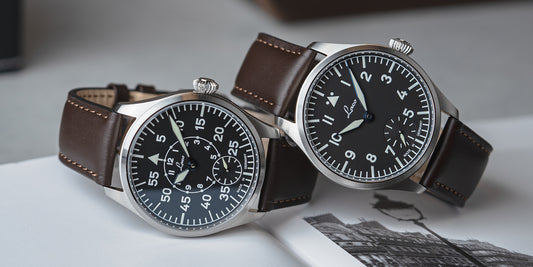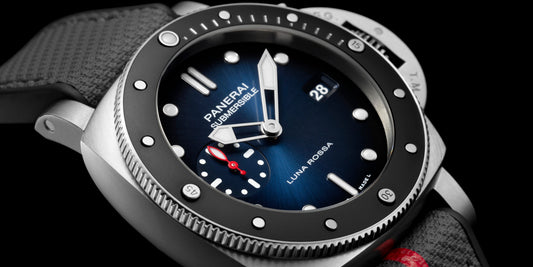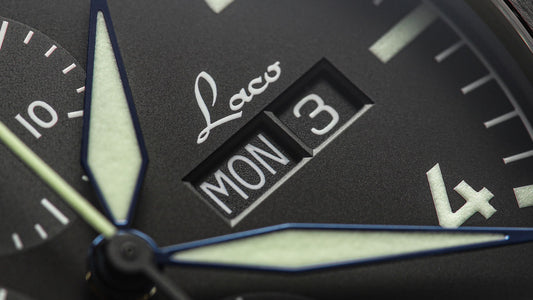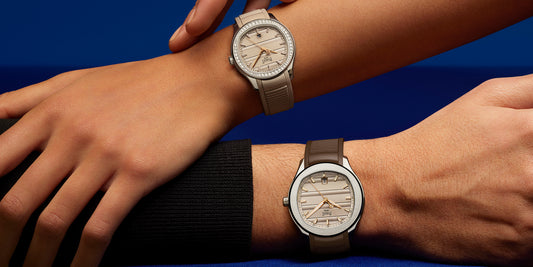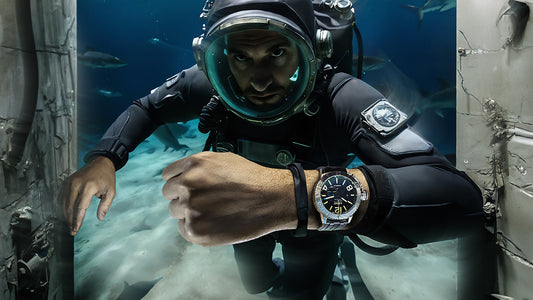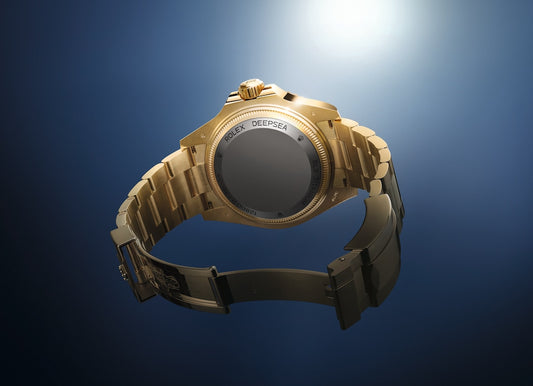What does the US Coast Guard wear on their wrists?
The United States Coast Guard (USCG) is one of the lesser known branches of the US military machine. Founded in 1790, a full 30 years before the UK decided it needed a similar force, the USCG has grown into a large organisation of around 42,000 people and numerous ships, some as large and well-armed as conventional naval warships. It has seen active service in all major international conflicts where the US required a presence such as Gulf War 1 and 2 – indeed a USCG Boston Raider port security boat was the first ship to sail into liberated Kuwaiti waters to secure a safe haven for Allied vessels. Over the years it has taken a totally different operational tack to the UK where HM Coast Guard is more synonymous with red and white SAR helicopters and small patrol craft rescuing stranded boats and crew. The US model currently falls under the Department of Homeland Security and, in-extremis, can be ordered by the President to become an integral part of the US Navy; although in practice that has not happened since WWII. Nevertheless, crews and ships regularly train for the call to arms as specialist military support and worldwide humanitarian work frequently takes the CG into harm’s way.

RJ on duty next to the USCGC Spencer with his Luminox Image Credit: RJ
I have a very close friend, of many years, who is a Chief Warrant Officer 3 in the USCG and have been lucky to spend time with him at his HQ near Boston Mass. He is primarily involved in Search and Rescue (SAR) work but has also been deployed across the US operationally, recently during the violent unprecedented hurricane season where his team took on HAZMAT, humanitarian and Law Enforcement tasks. It is important to remember that, unlike colleagues in the UK, all USGC staff are permanently armed so they make a formidable water-borne police force. He is currently busy with sensitive work and although he was very happy to chat to me on the record about his profession, for the purposes of this feature, we’ll just call him “RJ”.
The origins of this feature began when RJ read one of my articles on the Geckota online magazine. He is a big watch fan and an avid follower of the Geckota online magazine which nicely shows that Watch Gecko’s footprint is spreading. In conversation I asked him one day what watches were prevalent, operationally, in the USCG and we both saw potential for an interesting feature which was given the green light by the Geckota team in Tewkesbury.

The watch of choice - Image Credit: RG
Before we analyse any seaborne chronometers it is worth having a closer look at what the USCG actually does and how high-end equipment is fundamental to their job. RJ gave me a very detailed overview of the role of the organisation and what missions it is currently tasked with. They include, but are not limited to, Marine Environmental Protection, Drug Interdiction, Navigational Aid, Living Marine Conservation, Defence Readiness, Port and Waterway Security, Migrant Interdiction, Marine Safety, Ice Operation and finally Law Enforcement. This is a vast range of highly complex duties which could not be addressed by a handful of rigid-hull inflatable boats, therefore first and foremost to the successful operation of the Guard is a highly sophisticated and varied fleet that would put some international navies to shame. Ranging from Coastal Patrol Boats and Fast Response Cutters to Medium Endurance Cutters known as the Reliance and Famous Class, the CG has an impressive fleet, which is technologically sophisticated enough to operate hand-in-hand with the US Navy and other branch of the Armed Forces. This fleet is tactically supported further by substantial sea-going High Endurance Hamilton and Legend Class 418ft vessels which are highly capable, well-armed, and the size of an average warship. The Guard also currently operates the US's only heavy Ice Breaker, the Polar Star, as well as two medium Ice Breakers, the Healey and Mackinaw.

AlexiusHoratius, CC BY-SA 3.0, via Wikimedia Commons
The fleet is strategically placed around the US’s official 12000-mile coastline, although it is interesting to note that this distance is measured assuming that the coast is a series of straight lines – which of course it is not. If you accurately measure every curve and bay that figure jumps to a huge 90000 miles. It is, by any measure, a vast patrol area therefore harbours have been chosen over the years which allow for easy deployment to areas requiring the most critical infrastructure protection and which have the busiest shipping lanes.
RJ is based at one of the smaller but most picturesque and historic HQs along the New Hampshire coast. The U.S. Coast Guard Portsmouth Station, which patrols the mouth of the Piscataqua River, is based at the old British Fort Constitution in New Castle. In a State with more than its fair share of historic locations and buildings, the Fort is considered to be one of New Hampshire’s most important historic buildings. Constitution’s defences were first established at the site in 1631 by the British Army, and the secure location was originally called Fort William and Mary, after the then King and Queen. In December 1774 Paul Revere, one of the famous Patriots of the Revolution, rode to Portsmouth from Boston to warn the colonists of British plans to reinforce the fort, to protect its strategic store of powder. In a daring move by non-military trained colonists, local people surrounded the fort and seized cannon and 97 barrels of gun powder. Many historians consider the attack to be the first overt act of the Revolution and we know that some of the commandeered supplies were used in the later Battle of Bunker Hill. The Reverend Alonzo H. Quint, the first Chaplain in Chief of the Grand Army of the new Republic, later wrote of this significant time in the dissolution of British America:
“The daring character of this assault cannot be overestimated. It was an organized investment of a royal fortress, where the king’s flag was flying, and where the king’s garrison met them with muskets and artillery. It was four months before Lexington, and Lexington was resistance to attack, while this was a deliberate assault. When the king heard of this capture it so embittered him that all hope of concessions was at an end. It made war inevitable.”

USCG Hazmat Team - Image Credit: RJ
Last time I was at RJ’s station he took time to show me round the Fort and it’s now peaceful and beautiful surroundings. It is a fine structure and the fortifications are still impressive. I like to think the ruins took comfort from a Brit once again patrolling the walls, but RJ cheerfully whispered “Saratoga” in my ear and left me under no illusions that this small promontory saw the start of one of the greatest revolutions of all time. Outside the fort walls the landscape is a truly archetypal New Hampshire scene with wooden pastel colour buildings and the ubiquitous light house. The Fort now shares the land with a modern USGC watchtower and helicopter pad and boathouse where RJ’s Fast Response boat is moored ready to deploy at a moment notice. The last time I was there the station was very quiet, so I asked him what a normal day involves?
Portsmouth is manned 24/7 operating on two days on, two days off, or three on, three off rotas with all Petty Officers working every other weekend. Due to the high volume of private craft on this area of the river most of the station’s daily duties involve assistance to other boat owners and enforcement of the laws of the sea. There is a very large port at the town as well as a highly sensitive Naval Submarine facility and of course Boston 75 miles away so much of the operational time is spent on critical port security and tackling illegal shipping and narcotics. Station Portsmouth Harbour CG base is also supported by a fleet of USCG Sikorski MH-60 J-Hawk helicopters, the CG variant of the more famous Blackhawk, which are stationed at nearby Cape Cod.

The watch of choice - Image Credit: RG
At times of national crisis CG staff are pulled from all over the country and RJ was deployed for many months in Houston in 2017 when Hurricane Harvey wreaked havoc in the area. Such was the state of the flooding and port damage, the USCG were the only trained professionals able to gain access to some areas. They coordinated teams of highly trained operators from other emergency branches like the Environmental Protection Agency and local police who would advance into ruined residential areas such as Corpus Christi. RJ’s principle specialist duty was Hazardous Material (Hazmat) clearance. The Houston shipping channel is the third-largest petrochemical port and Harvey laid waste to storage areas which contained some very nasty substances. Out on patrol in Hazmat SUVs and compact boats the USCG teams found, safely recovered, and disposed of such material.

RJ on duty during Hurricane Harvey clean up - Image Credit: RJ
I asked RJ how he saw the USCG evolving over the next decade? He judged that the key to the future of the CG was a requirement to make the fleet of ships technologically more advanced which would, in turn, increase capability. The older Cutters are slowly being replaced as budget allows with the larger classes and there are plans to increase the use of Ice Breakers in Polar regions. The famous North West Passage which connects the Atlantic and Pacific oceans is seeing more use. Previously impassable for most of the year unless you were equipped with an ice breaker vessel, climate change has resulted in some ice melting and commercial ships can now pass through the route without specialist equipment. The US part of the passage which is above Alaska now requires regular patrol from emergency ship rescue, SAR, and law enforcement perspectives. Also, its proximity to Russia means that patrols are being increased in this period of greater tension between the two naval powers. Military support from the CG will always be required but RJ was at pains to make clear that they see their primary role as life savers – not soldiers.
USCG Watches

Unknown author, Public domain, via Wikimedia Commons
We have firmly established that the USCG are deployed in all manner of harsh environments and situations which takes us full circle to the question which triggered this brief study – what watches do CG operators prefer to wear? Well the initial answer was not what I expected – operationally, i.e. on ship, many staff wear no watches at all! In fact, on very small boats watches are banned. The risk that a strap may catch on an essential piece of equipment is considered too great. Only the Coxswain is permitted to wear a watch for essential timekeeping purposes.
When off duty, onshore, or on larger ships there is no regulation issue, but choices are not what you may expect.

Not your normal on wrist shot - Image Credit: RJ
For daily off duty life there is currently a proliferation of smartwatches. Now, I can hear the sharp intake of breath from the WatchGecko Online Magazine purist readers (I confess I did the same thing….), but I was prepared to listen and there is method to this selection. Most off duty CG staff are based at home as only a small staff are present at any given time in the base, so RJ has his smartwatch set for real-time meteorological and hurricane updates from the US National Weather Service as well as “scramble” text alerts from USCG HQ. This way, when the call goes out, he has probably had a heads up to prepare and will not miss an emergency duty call because he was not near his mobile phone. Makes sense, but rest assured, there are plenty of more conventional watches in service.

An ever-reliable G Shock - Image Credit: WatchGecko Online Magazine
No surprise that Casio Pro-Trek and G-Shocks are hugely popular. These indestructible units are prevalent due to their legendary waterproof and impact-resistant capabilities. The normally blue Titanium G-9100 Gulfman is even made in an orange special edition for US Rescue Personnel. Specialist Casio models such as the SGW-100H and 300H range are also popular due to their directional and barometer weather prediction functions. Staying with digital there are a few Sunntos and Garmins at RJ’s base, which again shows the popularity of direction and barometric functions to those who really need them.
Looking at analogue there is a smattering of simple US military-style watches such as Timex and at the other end of the aquatic scale a good selection of Citizen Diver Promaster units (which according to the only diver I ever knew are thoroughly respected equipment). RJ, on the other hand, as a watch aficionado, has a fine collection so when he is on and off duty here are his operational choices. Operationally he wears a special watch, a limited edition which was never on public sale. It is a unique professional edition Luminox 3051 Navy Seal Blackout 200m. Rather than keep this watch safe he opts to use it on the high seas, protecting his nation, which is refreshing and exactly what it was built for.

The Rolex Submariner 16610 - Image Credit: WatchGecko Online Magazine
Off duty, he swaps between the aforementioned smartwatch, an Ebel chronograph, an Omega Seamaster Planet Ocean and a Rolex Submariner Date, both of which will soon be sporting Geckota 20mm Premium military style straps! I am lucky to have spent a lot of time with United States Coast Guard staff. As they see their mission evolve to include military support and law enforcement it is comforting, when you ask an officer what his or her role is, they always reply – “to save lives”! Their motto is Semper Partus - Always Ready, and for that we thank them.



